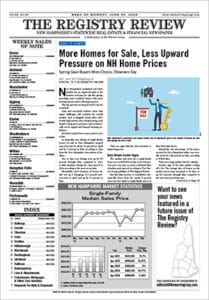While a flood of homeowners refinanced their loans last year, mortgage industry experts say many more – including many minority homeowners – have not done so, yet.
While mortgage refinancing has dropped off compared to the booming activity that lenders saw in 2020, industry figures say the sector has plenty of life left in it.
Real estate data and technology company Black Knight estimated that the U.S. in May had more than 14 million high quality candidates who could benefit from refinancing their mortgage. From homeowners who were unaware of falling rates to those who could refinance again to further reduce monthly expenses, loan originators could continue to find opportunities to bring in more refinance activity.
“We see this historic volume, but the reality is that many people just don’t take advantage of it,” said Patrick Boyaggi, co-founder and CEO of Own Up, a Boston-based mortgage technology company that helps consumers shop for and secure mortgages. “They’re either unaware of it, they have too many other things going on, or they just feel like it’s too involved a transaction to commit themselves to it, when in reality it is one of the best ways for people to create their own personal financial stimulus.”
Rates Remain Low
Mortgage rates have been near or below 3 percent for much of 2021, giving homeowners opportunities to save money.
Freddie Mac reported that the 30-year fixed-rate mortgage for the week ending June 24 averaged 3.02 percent, while the 15-year fixed-rate mortgage averaged 2.34 percent. Rates in 2021 have been about 0.25 to 0.5 percentage points lower compared to the start of the pandemic last year and between 1 to 1.5 percentage points lower than in the spring of 2019, before the Federal Reserve made the first of its three cuts to the benchmark interest rate in the second half of 2019.
Refinance volumes in New Hampshire on single-family homes year-to-date through May is at $5.58 billion, up 46.9 percent compared to the same period last year, before rates reached their lowest levels, according to The Warren Group, publisher of The Registry Review. The state saw 23,057 single-family refinances and 2,615 condominium refinances. Condominium refinance volumes were at $552.09 million through May, up 39 percent over the first five months of 2020.
In all of 2020, the state had 45,910 single-family refinances worth $11.2 billion and 4,931 condominium refinances worth about $1.06 billion.
Only 1 in 5 Refinanced
Even with the high volume of refinancing activity, Boyaggi said only about 20 percent of homeowners with mortgages have refinanced, helping to drive the continued activity.
Despite the activity lenders saw from homeowners last year, the pandemic meant many borrowers were focused on other priorities, including health and financial issues, Boyaggi said. These homeowners might now be in a position to work on their finances and take advantage of the low rates, he said.
Some of those refinancing in 2021 already did so at the start of the pandemic and have found that they can still benefit from going through the process again, Boyaggi said. He added that others have seen the value of their homes appreciate substantially. Rather than trying to compete in the housing market to find a new home, these borrowers could refinance again, accessing equity for home improvements.
Other homeowners are also not even aware of the opportunities to reduce payment through refinancing, Boyaggi said, while others might remember the mortgage process as arduous, not realizing how technology has made the experience more efficient.
Push to Attract Minority Borrowers
Initiatives by Fannie Mae and Freddie Mac look to give even more homeowners opportunities to refinance. Fannie Mae in early June launched Refi Now and Freddie Mac will launch Refi Possible this summer, programs that will help lower-income homeowners or those who experienced financial hardships during the pandemic to refinance. These programs will allow for higher debt-to-income ratios and reduce or waive loan-level pricing that typically lead to higher interest rates.
Boyaggi noted that low-income and borrowers of certain demographics tend to be left out of refinance booms. He said making borrowers aware of the programs and the effectiveness of the programs themselves will determine their impact.
“I commend them for starting with something, because the worst thing you can do is not anything at all,” Boyaggi said. “They put forth a plan, lenders are aware of it, hopefully consumers become aware of it, and they see what happens as a result of this program.”
Recent research from the Federal Reserve Banks of Boston, Atlanta and Philadelphia showed that through October 2020, only 6 percent of Black borrowers had refinanced as compared with almost 12 percent of white borrowers, 14 percent of Asian borrowers and 9 percent of Hispanic borrowers.
The researchers also estimated that while the typical refinance reduced the borrower’s monthly payment by $279, leading to a payment reduction of $5.3 billion per year for all households that refinanced, only $198 million, or 3.7 percent, went to Black households. Black households account for 13.3 percent of the population and 9.1 percent of all homeowners, the researchers said.

